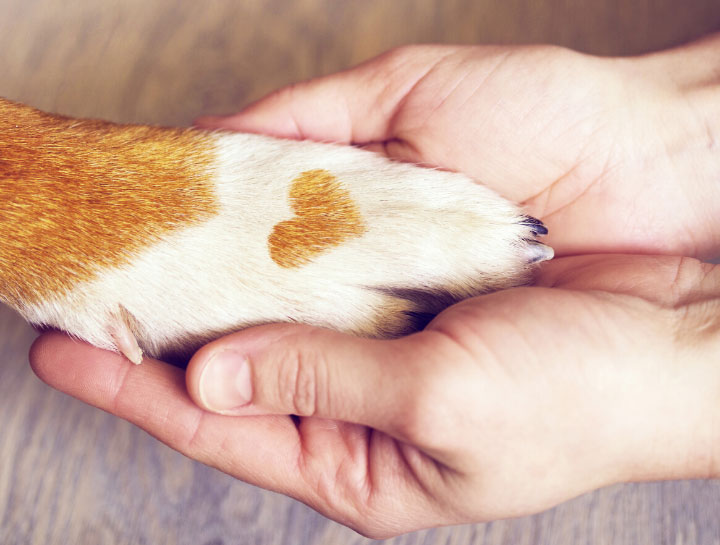End of Life Pet Care
A difficult decision.
When a pet’s quality of life deteriorates to the point where they experience more bad days than good days, you may be faced with the difficult decision regarding whether to choose euthanasia.
The same way we provide compassionate care for pets in their early days, we’re prepared to support you and provide end of life care for them during their last. As partners in your pet’s health, we’ll make sure you’re informed about all potential treatment options before you make a decision. We understand that making that kind of choice is never easy, but we promise to be there every step of the way.
Should you decide euthanasia is the right choice for your pet, we’ll prepare you for the process and answer any questions you may have about what’s going to happen. We hope you’ll find some comfort in knowing our humane methods will ensure your pet is laid to rest peacefully.
What happens during the euthanasia procedure?
Understanding what happens during a euthanasia procedure before the event can be beneficial. Not only will you understand the medical process, but you can be comforted by the knowledge that your pet will pass away in a completely painless and peaceful way. Our veterinarian will explain the procedure to you fully and answer any questions you may have.
Smaller to mid-sized pets are usually placed on a table, while larger animals are most often kept on the floor. This removes any discomfort your pet may feel from lifting. Ensure that you take their favorite sleeping blanket to give them added comfort during this time. A veterinary technician will usually hold your pet still to ensure that the procedure is done swiftly and smoothly.
All pets are first given an injection of a sedative under the skin. Your pet will slowly relax and probably fall asleep. Your veterinarian will then use a vein to inject your pet with an overdose of sodium pentobarbital or another anesthetic drug. This causes your pet to fall into unconsciousness, before slowing and then stopping the heart altogether.
Your veterinarian will use a stethoscope to confirm that the heart has stopped beating. For a few minutes after the process, you may witness involuntary muscle twitching and breathing from your pet. The bladder and bowels may also release. These are perfectly normal occurrences and no cause for concern. You are then usually given the option to spend a few minutes alone with your pet.
Cremation or Burial
Ahead of the euthanasia process, you will be asked whether you would prefer for your pet to be cremated or prepared for burial.
Cremation is very popular. We work with Bubbling Wells in Napa which offers group or private cremation. With group cremation, your pet’s ashes are spread over garden grounds in Napa California. With private cremation, the ashes are returned to you in a wooden urn. You can scatter your pets’ ashes in a favorite walking spot, keep them in the urn or arrange for them to be made into jewelry or a paperweight.
Alternatively, you may wish to bury your pet. If you want to bury your pet at home you should check any local ordinances for restrictions. There are also pet cemeteries located across the US and your veterinarian should be able to advise you on the cemetery closest to you.
Coping with Pet Loss
Pets are family and losing them comes with the same grief as any other loss. If you’re struggling with grief following the loss of your pet, remember to:
- Give yourself time to mourn and cry
- Do your best to stick to your regular routine
- Talk about your feelings with family, friends, or even our hospital staff
- Memorialize your pet in a way that’s special to you
You can use these resources if you need additional support:
Please reach out to us at (707) 762-3511 if there’s anything we can do for you.

